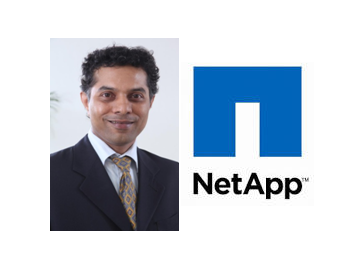Big data helps organizations maintain a competitive advantage by delivering numerous benefits in terms of effective data storage, predictability and speed of response. By applying analysis of big data to pressing business issues, companies are reshaping their operations – and accelerating their business results, D’ Souza said.
By enhancing enterprise agility in terms of efficiently storing large and disparate datasets and generating actionable intelligence in no time, organizations are seeing happier and more productive employees.
Enterprises are taking a fresh look at their data architecture; in some cases enterprises for the first time are actually creating data architecture. On the one hand transactional business environments are generating massive amounts of structured data; while on the other, the enterprise ecosystem is generating a variety of unstructured audio, document and video content. Finally, as the enterprise engages with its stakeholders through social and mobility initiatives, CIOs have to incorporate the implications into their data management strategies. The situation is set to get more complicated, as several sectors might have to deal with emerging initiatives like Machine to Machine communication and the Internet of Things.
Enterprises are classifying their application environments on the basis of workload characteristics: are they random access or sequential? Are they user-facing or non-interactive? Is the data best stored in a relational database or on a next generation parallel filesystem? Which access protocol is optimal – File, Block or Object based? As a result, data is being slotted into discrete categories – the traditional data stored in databases is being joined by data stored in No SQL databases and on parallel filesystems for analytics purposes as well as for bandwidth hungry applications and content oriented solutions.
NetApp’s Big Data strategy is focused around three segments — analytics, bandwidth and content, D’ Souza, said. NetApp’s solutions sets designed for managing data at scale are built on the E-Series and Data ONTAP platforms. NetApp’s portfolio also includes the StorageGrid solution which delivers a unified, object oriented content repository that can span multiple data centers that enterprises might have across geographies.
NetApp enables its clients to manage even the largest data sets and multi-application workloads with secure big-content solutions. NetApp helps clients turn big data from threat to opportunity by enabling them to store billions of files and petabytes of data in a single volume with efficient management.
With NetApp, one can scale the infrastructure to take on projects requiring massive data capacities and complex data-intensive applications. Organizations can also exploit new opportunities faster with non-disruptive and efficient management of data from multiple sources.
Commenting on the latest trends pervading big data environment, D’ Souza said big data will bet in to create challenges and opportunities for the industry. The explosion of unstructured data and mobile applications will generate a huge opportunity for the creation of business value, competitive advantage, and decision support if this data can be managed and harnessed efficiently. Making business sense of Big Data has already started making purposeful strides in the world of enterprise IT.
Despite these, Big Data is no longer an emerging trend, says D’ Souza. It is being tackled real time by IT administrators and entails a lot more than analytics alone. There is this whole angle to Big Data around the need for enhanced bandwidth to transmit large data files, the kinds generated due to enhanced collaboration of 3D design processes for instance. Widespread adoption of cloud computing also has a big role to play in increased bandwidth requirements.
Rajani Baburajan

